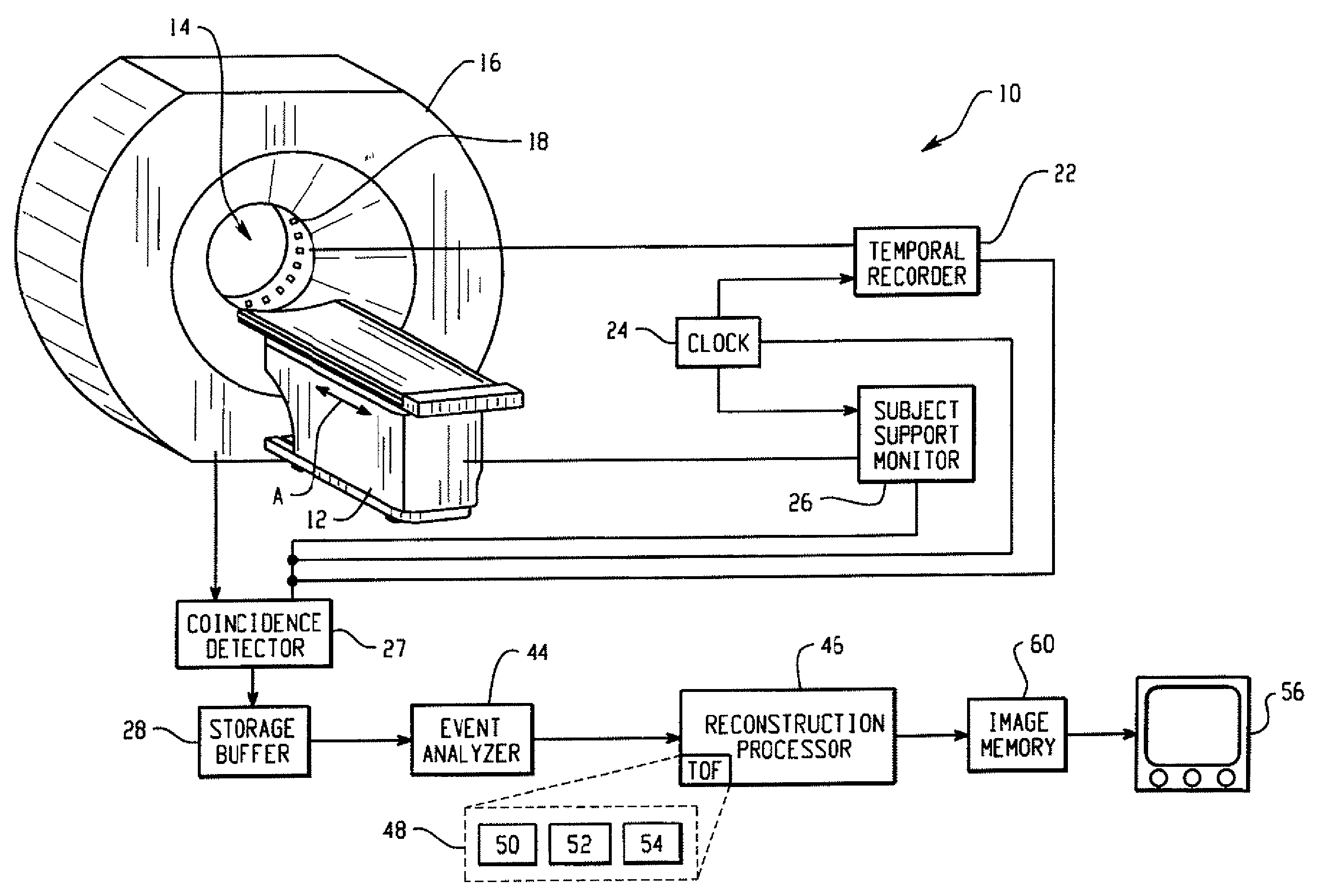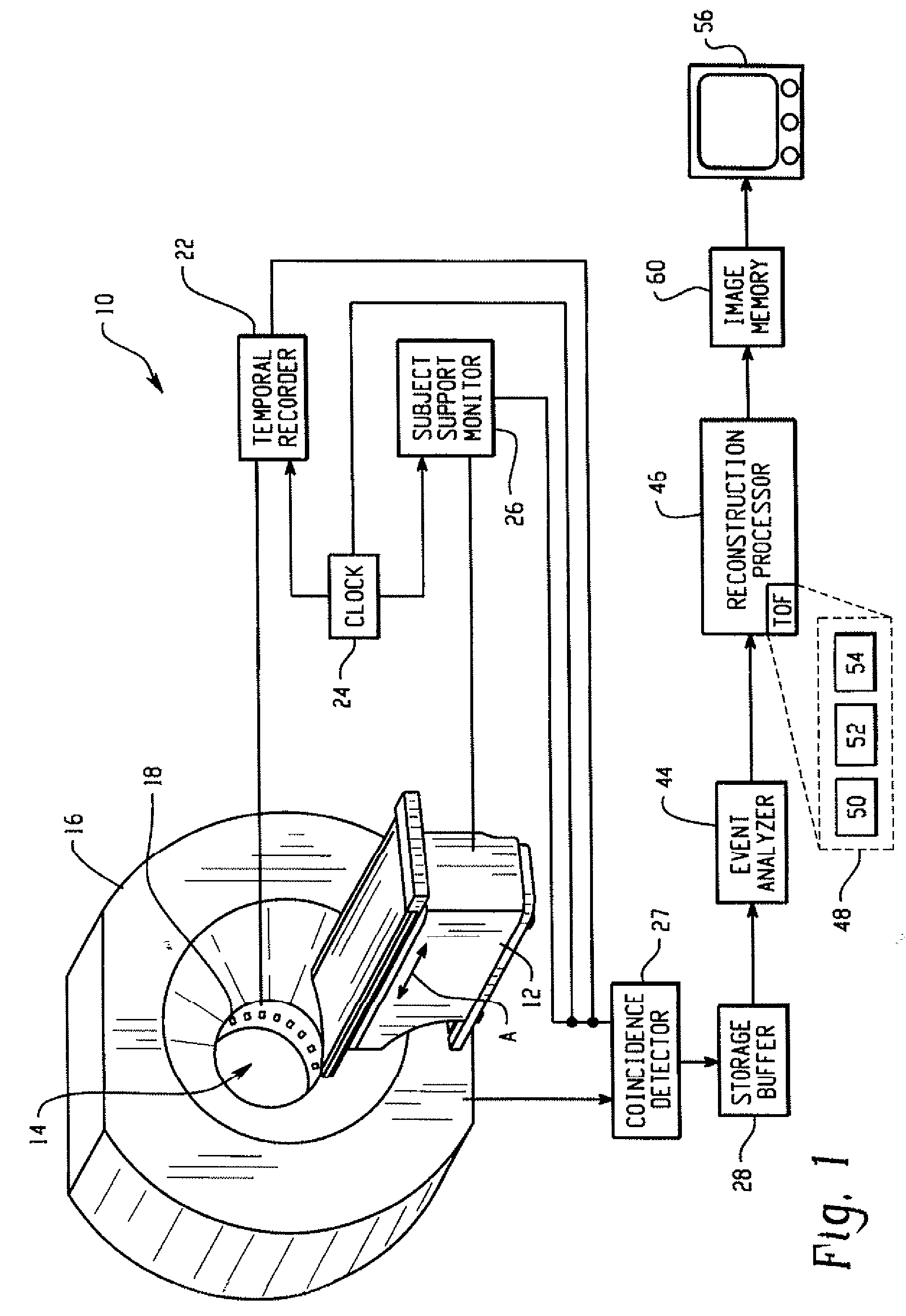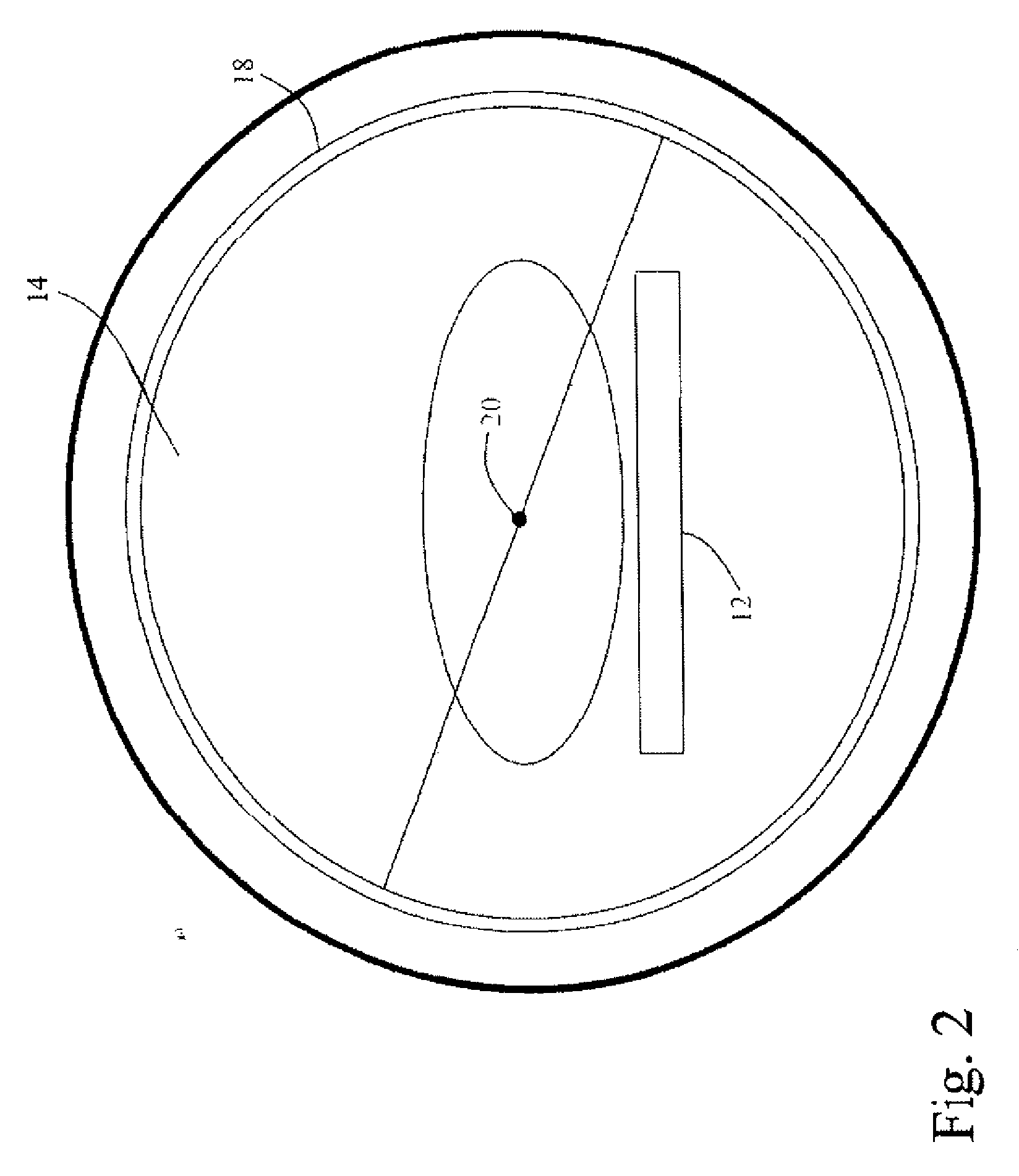Real-time list mode reconstruction
a real-time list mode and reconstruction technology, applied in the field of medical imaging, can solve the problems of discontinuities or artifacts commonly encountered in interface discontinuities, delay in reconstruction beginning, etc., and achieve the effect of improving subject throughput and fast image reconstruction
- Summary
- Abstract
- Description
- Claims
- Application Information
AI Technical Summary
Benefits of technology
Problems solved by technology
Method used
Image
Examples
Embodiment Construction
[0016] With reference to FIG. 1, a preferred embodiment of a nuclear medicine scanner 10 is shown. Prior to a scan, a subject is placed on a subject support surface 12. The subject support surface of moves along its longitudinal axis A, into and out of a bore 14 of a gantry 16 of the scanner 10. The bore of a PET scanner is lined with a cylinder of radiation detectors 18. Optionally, the detectors include a plurality of detector heads. In either ease, the detectors 18 are disposed around and along the subject receiving bore 14 to receive nearly concurrently incident γ-rays. Typically, incident γ-rays strike the detectors 18 which preferably include an array of scintillation crystals and photodetectors, although solid state, Anger-type, and other detectors are contemplated. The scintillation crystals emit small bursts of visible light when they are struck with γ-rays, and the visible light is detected by the photodetectors and converted into electrical signals. Solid state detectors,...
PUM
 Login to View More
Login to View More Abstract
Description
Claims
Application Information
 Login to View More
Login to View More - R&D
- Intellectual Property
- Life Sciences
- Materials
- Tech Scout
- Unparalleled Data Quality
- Higher Quality Content
- 60% Fewer Hallucinations
Browse by: Latest US Patents, China's latest patents, Technical Efficacy Thesaurus, Application Domain, Technology Topic, Popular Technical Reports.
© 2025 PatSnap. All rights reserved.Legal|Privacy policy|Modern Slavery Act Transparency Statement|Sitemap|About US| Contact US: help@patsnap.com



